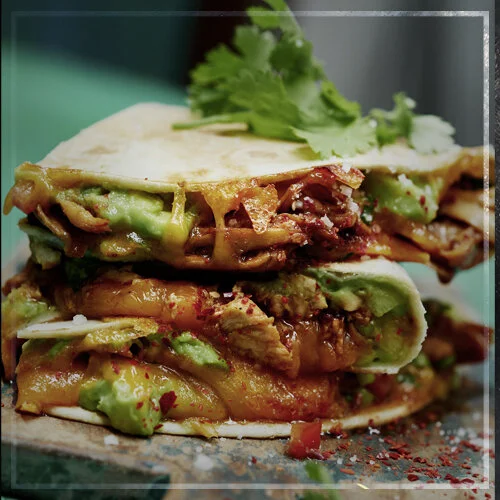.... LIMA’S CHEFS DISH UP – PART I .. Limas Köche tischen auf – Part I....
....
1:00 pm. The hubbub of a busy lunch break. Business people in summery outfits finding seats. My eyes wander through the bright room, kept in warm white and brown colours. Old mosaic tiles cover the floor, a low brick wall separates the bar and the dining room. A group of guys jokingly order drinks from the waiter. A familiar atmosphere, people obviously know each other.
I’m in Rafael Osterling’s “Rafael”, a highly popular restaurant in the middle of Miraflores. This fashionable district of Lima is located in a two kilometre beeline from the beaches of the Pacific coast.
First, Rafael apologises through the means of a waiter for his absence, but then over half an hour later he greets me with an intimacy as if we had gone to school together. Barely sitting, he orders the first appetisers to our table. Sliced Mediterranean style tuna with capers and olive oil as well as a salad of arugula, cherry tomatoes and avocado. If there hadn’t been cubed mango on my plate, as well as fresh palm tree hearts and a dip with “aji Amarillo”, Peru’s juicy yellow chilli, I could have imagined I was in Sardinia.
..
13.00 Uhr. Quirlige Mittagspause. Geschäftsleute in sommerlichen Businessoutfits finden ihre Plätze. Mein Blick schweift durch den lichten, in warmen Weiß- und Brauntönen gehaltenen Raum. Alte gemusterte Fliesen am Boden, eine halbhohe Backsteinmauer als Trennwand zwischen Bar und Speiseraum. Eine Männergruppe bestellt scherzend ihre Getränke beim Kellner. Vertraute Atmosphäre. Man kennt sich.
Ich bin im „Rafael“ von Rafael Osterling, einem der angesagtesten Restaurants mitten in Miraflores, Lima's mondänem Stadtteil, 2 Kilometer Luftlinie vom Pazifikstrand entfernt.
Zunächst lässt sich Rafael durch einen Kellner entschuldigen, doch mehr als eine halbe Stunde später begrüßt er mich dann in einer Vertrautheit, als wären wir gemeinsam zur Schule gegangen. Kaum sitzend, ordert er schon die ersten Vorspeisen an unseren Tisch. Scheiben von Thunfisch, mediterran, begleitet mit Kapern und Olivenöl sowie einem Salatbouquet aus Ruccola, Kirschtomaten und Avocado. Wären da nicht noch Mangowürfel, frische Palmenherzenstreifen sowie ein Dip mit „aji amarillo“, Perus fruchtig-gelbem Chili, auf meinem Teller – ich wähnte mich in Sardinien.
....
....
The theme here is “fusion”, making Peru’s emerging cuisine so exciting in the second decade of the 21st century.
500 years after colonisation by a handful of swashbuckling Spaniards, their decedents believe, after intensive training in Europe’s fine gastronomy, that they should return to Peru’s local pots and pans and set up their own restaurants in the 8 million strong metropolis, Lima.
..
„Fusion“ heißt das Thema, welches Peru's aufstrebende Küche im zweiten Jahrzehnt des 21. Jahrhunderts so spannend macht.
500 Jahre nach der „Kolonisation“ durch eine Handvoll Haudegen spanischer Abstammung finden deren Nachkommen, nach einer intensiven Ausbildungszeit in Europas Spitzengastronomie, zurück an Perus heimische Töpfe und gründen ihre eigenen Restaurants in der 8 Millionen Metropole Lima.
....
....
After studying law, Rafael decided to go into cooking. Spending his apprenticeship for two years in London and two years in Paris with all of its ups and downs, he returned to Lima to open “Rafael” in 2000.
After two further courses and animated conversation we receive a “Tiradito de corvina”, a special adaptation of Ceviche, but without the onions and cut in a manner reminiscent of Japanese Sashimi.
“Fish and seafood are the basis of my cuisine. For the highest standards, the product counts 70% and the cook 30%,” he says, but then his phone vibrates on the wooden tabletop, he takes the call and disappears into the kitchen.
..
Auch Rafael wechselte nach einem Jurastudium zum Kochen, durchschritt in zwei Jahren London und zwei Jahren Paris die Höhen und Tiefen der Lehrjahre, ehe er im Jahr 2000 das „Rafael“ eröffnete.
Nach zwei weiteren Gängen in angeregter Unterhaltung folgt ein „Tiradito de corvina“, eine spezielle Abwandlung des Ceviche ohne Zwiebeln in der Schnittweise des Fisches – sehr ähnlich dem japanischen Sashimi.
„Fisch und Meeresfrüchte sind die Basis meiner Küche. Für ein Topniveau sind 70% das Produkt und 30% der Koch verantwortlich“, führt er aus, doch dann vibriert erneut sein Handy auf dem Holztisch und er entschwindet mir telefonierend in die Küche.
....
....
It is time for my next appointment! We manage to get a portrait of Rafael, then I jump into a taxi. “Restaurant Malabar, camino real 101, San Isidro, please,” I tell the driver. Driving through the street canyons of the banking district “San Isidro”, the impressions zoom by. HSBC, Ernst & Young, even Engels and Völkers can be found here. The relics of “El Condor Pasa” and romantic pan flute music, which the country still embellished only a few years ago, have been replaced by this modern Peru.
I stand in front of the puristic white façade of the “Malabar”, Pedro Miguel Schiaffino’s restaurant.
Inside I read the 10-course degustation menu that seems alien even to the expert.
..
Mein nächster Termin wartet! Wir schaffen noch das Porträt mit Rafael, dann springe ich in mein Taxi. „Restaurant Malabar, camino real 101, San Isidro, bitte“, sage ich zu meinem Fahrer. Im Taxi wischen die Eindrücke in den Straßenschluchten des Bankenviertels „San Isidro“ an mir vorbei. HSCB, Ernst & Young, sogar Engels und Völkers sind hier vertreten. Vorbei die Relikte von „El Condor Pasa“ und Panflötenromantik, mit denen Peru sich noch vor Jahren schmückte. Hier Ist Peru in der Moderne angekommen.
Ich stehe vor der in puristischem Weiß gehaltenen Fassade des „Malabar“, Pedro Miguel Schiaffino's Restaurants.
Innen liest sich das Degustationsmenue mit seinen 10 Gängen selbst für den Kenner befremdlich. ....
....
Pedro Miguell belongs to the group of Peruvian chefs who utilise the variety of ingredients that the 40 different microclimates within the country produce, integrating everything into their dishes. Ecologically conscious, he uses sustainably produced fish in his kitchen, such as the paiche from the Amazon Basin. Paiche is a catfish-like species, that can reach a length of up to 2.5 metres and is believed to be the largest freshwater fish in the world.
However, there is no paiche in front of me today, but perfectly cooked lamb medallions sporting the most tender nuances of pink. I euphorically stare onto my plate, contemplating this masterpiece… What is that? Pebbles?! I lean forward, eyeing it a little closer. No. Those are not perfectly arranged stones next to the medallions, but in fact tiny potatoes. The stereotypical German inside me enthusiastically applauds.
..
Pedro Miguell gehört zu der Gruppe peruanischer Köche, die die Vielfalt an Produkten, welche das Land mit seinen 40 verschieden Mikroklimas hervorbringt, voll ausnutzt und in ihren Gerichten integriert. Bewusst bezieht er nachhaltig produzierte Fische, wie den Paicheaus dem Amazonasbecken, für seine Küche. Das ist eine welsartige Spezies, die an die 2,50 Meter erreichen kann und als größter Süßwasserfisch der Welt gilt.
Vor mir liegt nun jedoch kein Paiche, sondern perfekt gebratene Lammrücken-Medaillons, das Fleisch gefärbt in den zartesten Rosa-Nuancen. Voller Verzückung starre ich auf den Teller, betrachte das Wunderwerk… Was ist das? Kieselsteine?! Ich beuge mich vor, sehe genauer hin. Nein. Tatsächlich liegen da keine Steine in scheinbar zufälliger Perfektion neben den Medaillons, sondern winzig kleine Kartoffeln. Der „Typisch-Deutsche“ in mir klatscht begeistert in die Hände.
....
....
A fair number of courses later I step through the door and onto the streets of Lima. Frenzied street life swarms around me. I won’t lie, I could have enjoyed a few more rounds of courses but, as everyone knows, you should stop when you feel at your best. And so I turn my back on the “Malabar”. Hasta la próxima vez!
..
Nicht wenige Gänge später trete ich wieder über die Schwelle hinaus auf die Straßen Limas.
Wildes Straßengewirr umschwirrt mich. Ich will nicht lügen, mein Appetit hätte noch ein paar Runden vertragen können, aber man soll ja bekanntlich aufhören, wenn es am schönsten ist. Also kehre ich dem „Malabar“ den Rücken. Hasta la próxima vez!
Ich werde zurückkommen ...
....



































